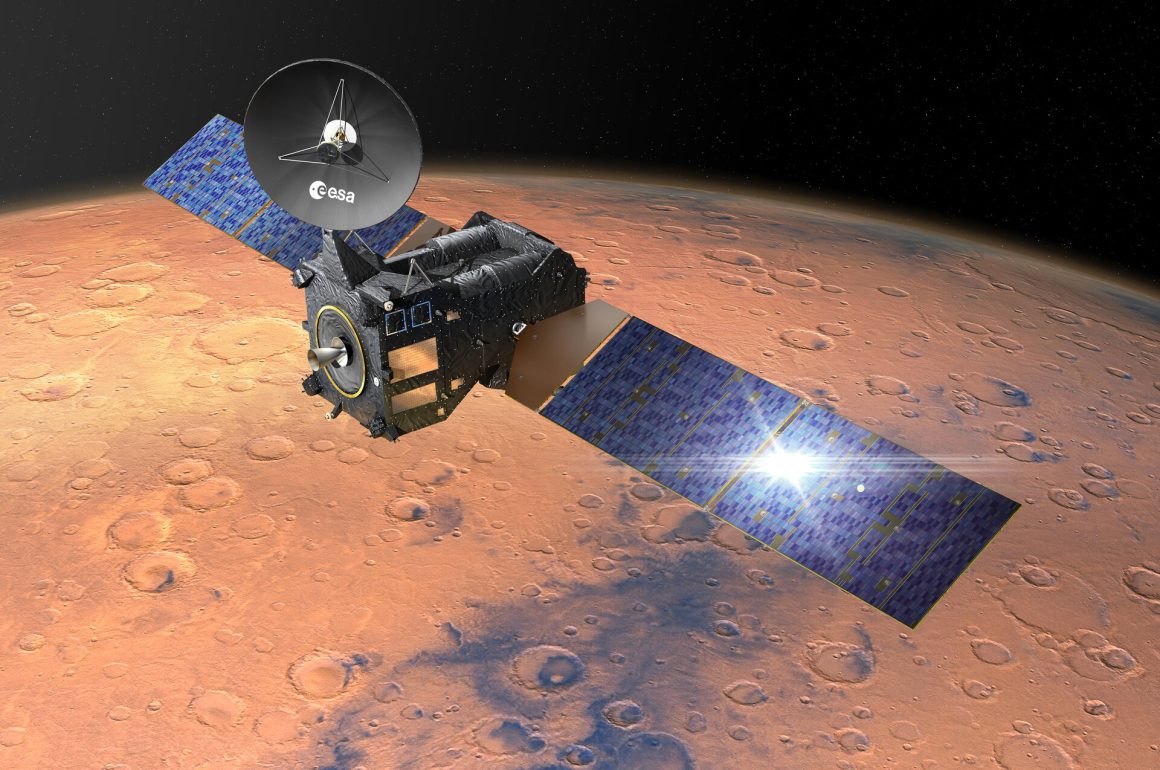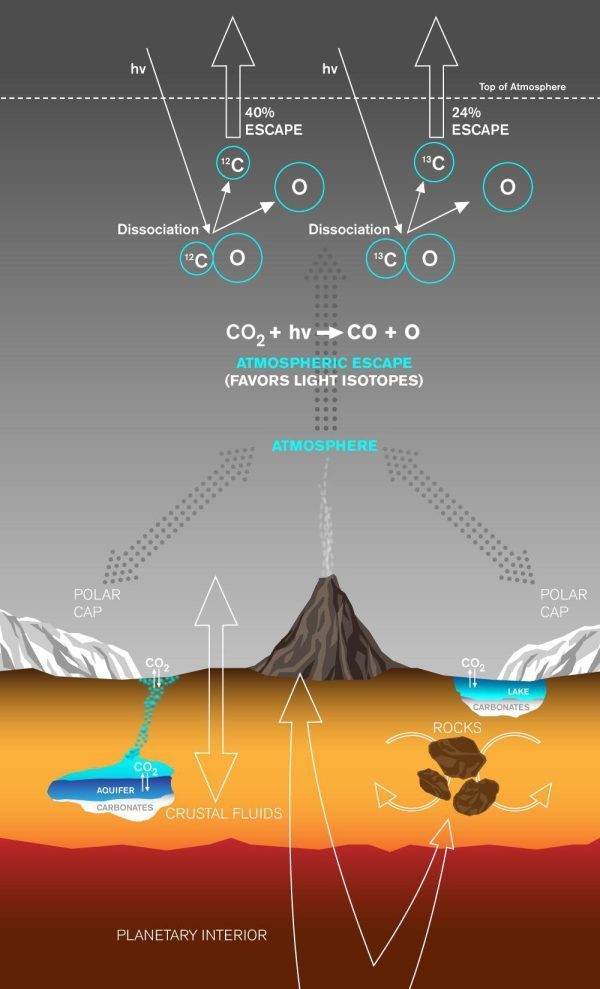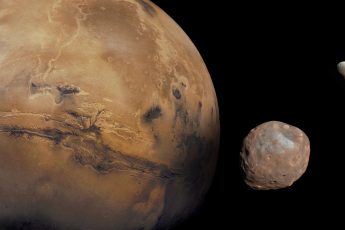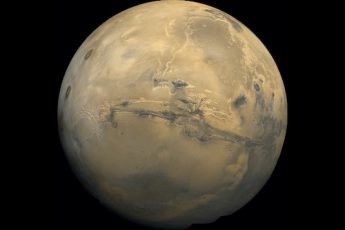Observation of Carbon Isotope Ratios in CO in the Martian Middle Atmosphere

Today, Mars has 0.006 atm thin atmosphere, on the other hand, 4 billion years ago it had ticker atmosphere, with the pressure of over 5 atm. (Kurokawa et al., 2017).
” Where and how was the ancient thick Martian atmosphere lost? “
and
” What is it like today ? “
are the important topics in the Martian research.
The ratios of isotopes are considered significant parameters in comprehending the indications of atmospheric evolution and circulation, as they change only by limited processes.
The current Martian atmosphere consists mostly of CO2, accounting for over 95%, and the following factors are considered as causes of variations in the carbon isotope ratio:
- Escape into outer space
- Diffusion
- Photodissociation

Carbon Exchange and Loss Processes on Mars (credit : https://www.jpl.nasa.gov/images/pia20163-carbon-exchange-and-loss-processes-on-mars)
Therefore, I want to clarify
“how much carbon isotope ratio in CO changes due to photodissociation”
by analyzing infrared spectral data observed by TGO/NOMAD.
In the future, I hope to determine the cause of changes in carbon isotope ratios in detail through analysis of isotope ratios in CO2 as well as CO, and comparison with our one-dimensional photochemical model (Yoshida et al., 2023).
(M2, Kimie Shiobara)
Fig : ExoMars Trace Gas Orbiter (TGO)
(credit : https://www.esa.int/ESA_Multimedia/Images/2014/01/ExoMars_Trace_Gas_Orbiter)





